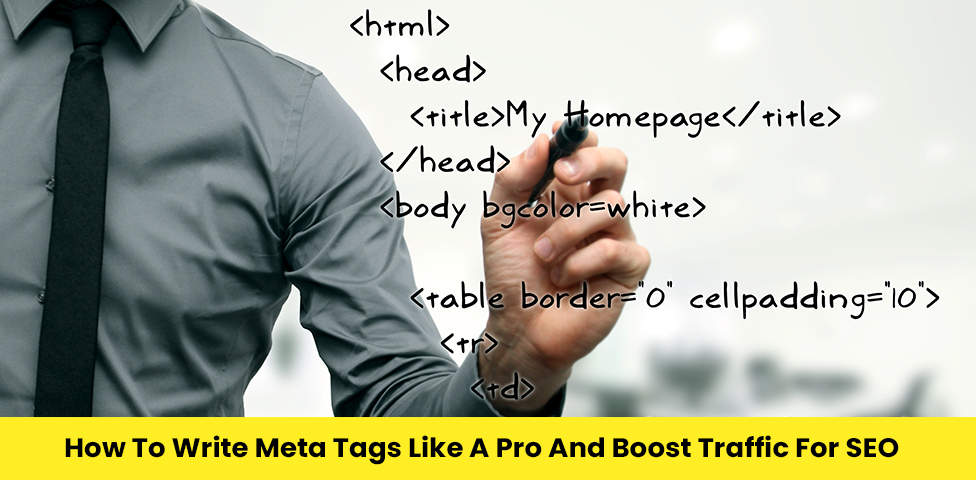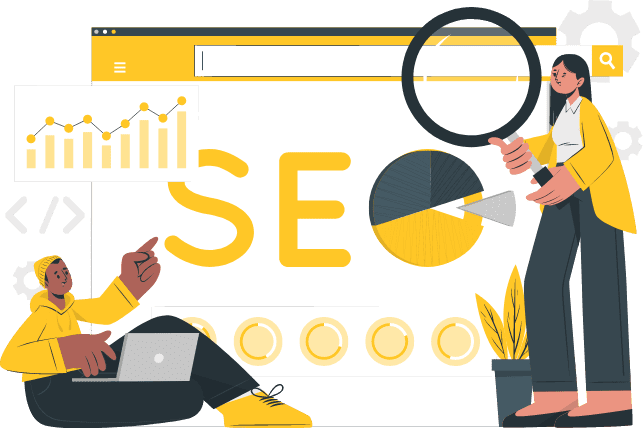
- May 04, 2022
How To Write Meta Tags Like A Pro And Boost Traffic For SEO?
When it comes to SEO (Search Engine Optimization), there is no “set it and forget it” strategy as it is critical to stay up to date and remain in touch with the latest search engine algorithms which are regularly optimized to make searching more convenient that can make it easier for visitors to discover your website.
What are Meta Tags?
Meta tags are snippets of texts that describe the content within the page. However, they do not appear on the page itself but are written in the page’s source code in HTML, usually at the “head” of the page, and so are only visible to search engines (and people who know where to look). Actually, meta stands for metadata, which is the kind of data these tags provide – data about the nature of the content on your page. Now if you want to find out whether a given page is using meta tags, the easiest way is to right-click anywhere on the webpage and select “view page source”. Once you do this a new tab or a pop-up window will open in the browser, and the part on the top or “head” of the page, is where the meta tags would be. Here is an illustration of how the meta tag will look in HTML: There are many types of meta tags that are used to describe the content of a website to the search engines. However, the most important ones tend to be the “title” and the “description” tabs. As these two tabs are displayed on the SERP (Search Engine Result Pages) after you run a search query.
For a layman to understand, any webpage’s meta title and meta description act as a digital billboard providing the visitor a quick overview of that page.
Hence “title” and “description” meta tags are the most crucial tags when it comes to ranking your page on the search results as they can make or break an opportunity for finding a new visitor or a potential business prospect from your website.
That being said here is the list of meta tags from the best SEO company in Kolkata that are the most important ones to pay attention to and how you can create them correctly, as you begin optimizing your website for SEO.
There are many types of meta tags that are used to describe the content of a website to the search engines. However, the most important ones tend to be the “title” and the “description” tabs. As these two tabs are displayed on the SERP (Search Engine Result Pages) after you run a search query.
For a layman to understand, any webpage’s meta title and meta description act as a digital billboard providing the visitor a quick overview of that page.
Hence “title” and “description” meta tags are the most crucial tags when it comes to ranking your page on the search results as they can make or break an opportunity for finding a new visitor or a potential business prospect from your website.
That being said here is the list of meta tags from the best SEO company in Kolkata that are the most important ones to pay attention to and how you can create them correctly, as you begin optimizing your website for SEO.
1. Title Tag
 Title tags are the most important meta tags that can have a direct impact on your webpage’s search ranking.
Therefore, having a well-written title tag can not only help to magically rank your website quickly, but it will also help in increasing clicks.
Best Practices to follow for creating title tags:
Title tags are the most important meta tags that can have a direct impact on your webpage’s search ranking.
Therefore, having a well-written title tag can not only help to magically rank your website quickly, but it will also help in increasing clicks.
Best Practices to follow for creating title tags:
- The maximum length of the tag should be between 50-60 characters.
- Include the meta keyword(s) that you are trying to rank for the webpage and place them at the beginning of the HTML source code.
- Avoid stuffing multiple keywords (more than two) as it can have a negative impact on the SEO for that page.
2. Meta Description
 A meta description is a string of texts that help to summarize the content of a web page and it appears just below the title tag.
Even though meta descriptions do not help to improve your website’s ranking but it plays an important role in boosting the page’s Click Through Rate (CTR) in Google’s SERP.
Best Practices to follow for creating meta descriptions:
A meta description is a string of texts that help to summarize the content of a web page and it appears just below the title tag.
Even though meta descriptions do not help to improve your website’s ranking but it plays an important role in boosting the page’s Click Through Rate (CTR) in Google’s SERP.
Best Practices to follow for creating meta descriptions:
- Even though there is no limit on the length of the meta descriptions. However, since Google only shows the first 160 characters in its SERP. Hence it is recommended to keep the length within 50-160 characters.
- The meta description should target the keyword(s) in a natural and human way
- Avoid duplicates as each description must be unique and original
- You can add a Call to Action (CTA) in the copy such as “Buy”, “Learn More”, Shop, etc.
4. Image Tag
 As none of the search engines can view any images, hence it is suggested to create image tags (aka “alt text”) to illustrate the content and meaning of an image.
Image tags are especially important for ADA-compliant websites.
Adding more content around the images also makes it easier for the search engines to provide the users with the best images on a search.
Best Practices to follow for creating image tags:
As none of the search engines can view any images, hence it is suggested to create image tags (aka “alt text”) to illustrate the content and meaning of an image.
Image tags are especially important for ADA-compliant websites.
Adding more content around the images also makes it easier for the search engines to provide the users with the best images on a search.
Best Practices to follow for creating image tags:
- You can use keywords when describing the images. Although not including keywords does not have a huge impact on the search engines.
- Optimize your most important images.
- When uploading images to your CMs, name them appropriately and avoid using images that read “DSC-HX9901895” or similar forms and so tell nothing about the images.
5. Header Tag
 Heading tags or header tags rank in order from H1 to H6 and help to divide the page into easily digestible sections for ease of reading. Additionally, header tags aid the search engines to understand and crawl through the website and create a better experience for the crawler bots.
Best Practices to follow for creating header tags:
Heading tags or header tags rank in order from H1 to H6 and help to divide the page into easily digestible sections for ease of reading. Additionally, header tags aid the search engines to understand and crawl through the website and create a better experience for the crawler bots.
Best Practices to follow for creating header tags:
- Avoid naming your headers by Chapter 1, Chapter 2, Chapter 3, etc...
- Include relevant keywords and headings relevant to the body text.
- Make sure all of your H1s are unique.
- Be interesting and consistent with your other pages.
Our Office

USA
Seattle
2515 4th Avenue, Centennial Tower Seattle 98121
United States Of America
+1-7543-335-140

Australia
Sydney
Rubix Alliance Pty Ltd Suite 305/30 Kingsway, Cronulla NSW 2230
+6-1480-023-313

India
Kolkata
Adventz Infinity, Office No - 1509 BN - 5, Street Number -18 Bidhannagar, Kolkata - 700091 West Bengal
+91-8240-823-048
India
Bengaluru
KEONICS, #29/A (E), 27th Main, 7th Cross Rd, 1st Sector, HSR Layout, Bengaluru, Karnataka 560102
+91-9804-360-617
Unleash the Sales Beast Within and Watch Your Revenue Soar!
GET A FREE ANALYSIS OF YOUR WEBSITE NOW!








